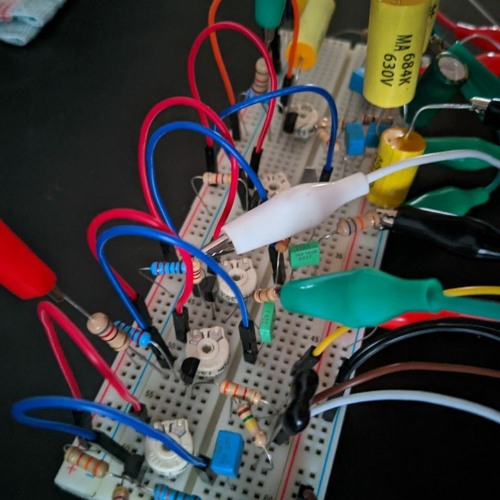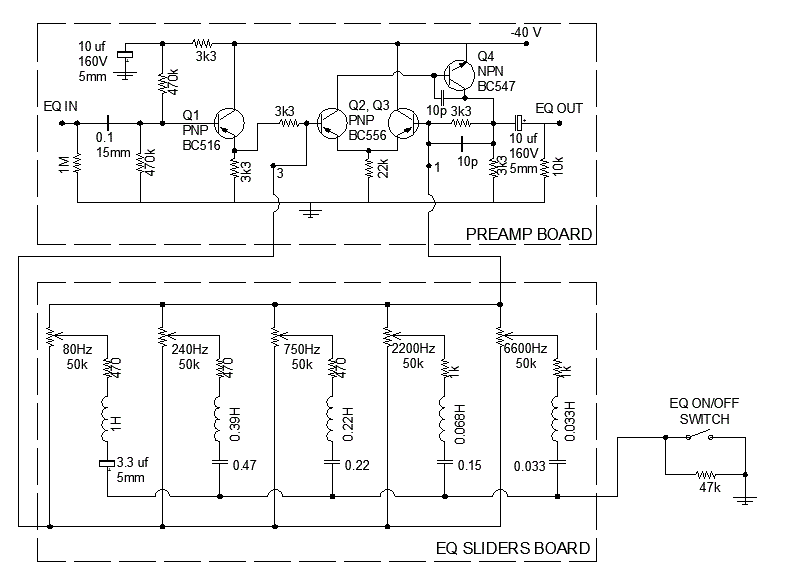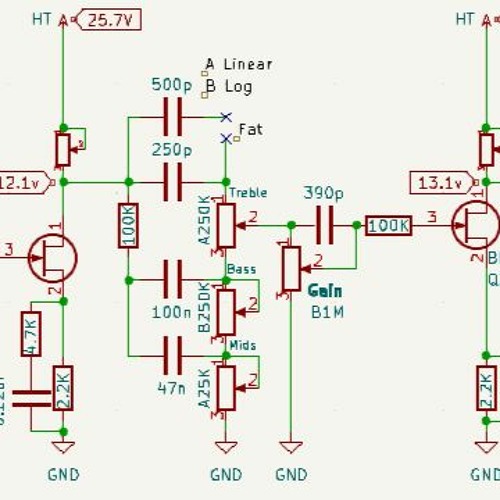albatros_1994
Kungen
New project, again and again.  I want to share with the internet
I want to share with the internet
a Mesa Mark IIC++ "Replica", the preamp is really interesting as it's different from other metal amps, how good it sound even with all those stages center-biased (1.5K on the cathode almost everywhere), it's aggressive and tight without sounding muddy/fuzzy.
I used BF245Bs at 25v, they served me well on the other jfet project. I started 2-3 days ago and built the basic preamp on a prototyping board, no EQ a the beginning and no EQ a the end because i don't have the right pots and enough cables, at the moment i have a standard gain pot setup, tuned to kinda simulate having the Bass knob at 0 on the original amp, again, kinda.
I tried to bias the stages as close as possible to the original, the cathode bias caps i'm using right now are not the same as the orignal amp, but i needed to adjust the size to make it sound as it should, the total gain seems fine but i will finetune the general voicing of the stages as soon as the preamp receives a EQ, but it already sounds fine to me.
I don't own a Mark IIC++, so i'm forced to use youtube videos as reference.
It's a total mess at the moment, but i wanted to work fast, i'll solder all on a point to point board as soon as i receive the components i need.
Here is a beta-grade schematic and really bad pictures



i also recorded some stuff running it through a 2xEL84 power amp, i take the signal from a load-box and that apply a slight EQ + Stereo IR (Mesa Cab + SM57 / The One + SM57), to get a realistic final-sound.

 on.soundcloud.com
on.soundcloud.com
The next steps are: solder all this stuff on a real board, the two EQ, voice it "right" + finetuning, than design a faceplate.
 I want to share with the internet
I want to share with the interneta Mesa Mark IIC++ "Replica", the preamp is really interesting as it's different from other metal amps, how good it sound even with all those stages center-biased (1.5K on the cathode almost everywhere), it's aggressive and tight without sounding muddy/fuzzy.
I used BF245Bs at 25v, they served me well on the other jfet project. I started 2-3 days ago and built the basic preamp on a prototyping board, no EQ a the beginning and no EQ a the end because i don't have the right pots and enough cables, at the moment i have a standard gain pot setup, tuned to kinda simulate having the Bass knob at 0 on the original amp, again, kinda.
I tried to bias the stages as close as possible to the original, the cathode bias caps i'm using right now are not the same as the orignal amp, but i needed to adjust the size to make it sound as it should, the total gain seems fine but i will finetune the general voicing of the stages as soon as the preamp receives a EQ, but it already sounds fine to me.
I don't own a Mark IIC++, so i'm forced to use youtube videos as reference.
It's a total mess at the moment, but i wanted to work fast, i'll solder all on a point to point board as soon as i receive the components i need.
Here is a beta-grade schematic and really bad pictures



i also recorded some stuff running it through a 2xEL84 power amp, i take the signal from a load-box and that apply a slight EQ + Stereo IR (Mesa Cab + SM57 / The One + SM57), to get a realistic final-sound.

Mesa Mark IIC++ JFET Replica
Listen to Mesa Mark IIC++ JFET Replica by Generaleramon #np on #SoundCloud
The next steps are: solder all this stuff on a real board, the two EQ, voice it "right" + finetuning, than design a faceplate.














